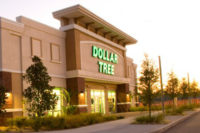Dollar Stores
The dollar channel continues to perform well, and with the addition of more perishable products and acceptance of new payment forms, store traffic and shopping baskets will increase.
With consumer debt rising and economic conditions challenging for a large segment of the population, it’s a good time to be a “value retailer,” and this is the ultimate value channel, even beating out Wal-Mart for low-price-leader status.
“This strength is driven by a pricing strategy
that is designed to match the promoted price point of the leading
mass/discount chain in the market,” says David Bishop, vice
president, Willard Bishop Consulting, Barrington, Ill. “This means
that Wal-Mart has competitive pricing [vs. dollar stores] only when
they’ve rolled back their everyday prices,” notes Bishop, an
expert in small-format stores.
| Channel Leaders* | |
| Chain | Annual Sales (in billions) |
| 1. Dollar General | $8.6 |
| 2. Family Dollar | $5.8 |
| 3. Dollar Tree | $3.4 |
| 4. Fred's | $1.6 |
| 5. 99 Cents Only | $1.0 |
| *For 2005 Source: Company reports |
|
The opportunity before them has not been lost on
dollar channel retailers. The nation’s network of dollar stores is
spreading like a particularly fast-growing vine, with new outposts cropping
up throughout the country.
In fact, the store count has more than tripled in the
past decade, going from 5,548 in 1996 to 18,921 in mid-2006, according to
ACNielsen’s “Channel Blurring and Consumer Trends”
report. Not surprisingly, household penetration is climbing as well.
According to the same ACNielsen report, 67 percent of U.S. households now
shop in dollar stores, up from 59 percent household penetration in 2001.
“Dollar continues to be a strong
growth segment,” says Bishop. “Mean sales growth for Dollar
General and Family Dollar grew 5.7 percent and 7.8 percent respectively in
September vs. prior year. In terms of same-store sales, Dollar General is
slightly positive (0.5%), whereas Family Dollar is up 2.2 percent. The
importance of these trends is that a growing number of CPG manufacturers
are investing more resources into the dollar [channel] as a way to capture
their share of the growth.”
Branching out
The channel’s growth spurt is not limited to
geographic expansion. Across the board, leading chains are adding
more perishable products to the mix and installing the refrigeration units
required for the move. Dollar General is testing its Dollar General Market
format, which is twice the size of its traditional store, in at least 50
locations. Family Dollar has installed refrigerated cases in nearly 4,000
stores so far, and plans to add them in an additional 1,000 stores in
fiscal year 2007. Dollar Tree is taking similar steps.
At the same time, the chains are making the shopping
experience easier for customers by accepting more forms of payment,
including food stamps. Dollar General announced in September that it would
begin accepting Visa credit and check cards, and Family Dollar said the
chain expects to accept food stamps in 750 stores during the course of
fiscal 2007.
Strategies such as these — along with effective
merchandising — have helped offset some of the marketplace
challenges, including the high price of gasoline for much of the year, says
Timothy Reid, vice president of investor relations for Dollar Tree Stores.
“So far in the first half of this year, our
average shopping basket is up 3.4 percent,” Reid reports. “And
last year it began to increase in the second quarter and was up for the
year [by] 2 percent.”
Candy in dollar stores
Dollar channel candy sales reached $800 million for
the year ending in June of 2006, up slightly vs. the prior year. Candy is a
top-selling product category for the channel, and given the fact that it
has higher gross margins than most consumable products, it’s unlikely
that dollar retailers will lose sight of its profit-boosting ability.
There’s also a definite expandable consumption
opportunity. “It’s a highly impulsive purchase,” says
Bishop, “which means that more effective merchandising will generate
incremental sales for the category and the store.”
Sheila McCusker, editor of “IRI Times and
Trends,” predicts that dollar stores will continue to maximize
opportunities in the category.
“Consumers know they can go to dollar stores to
get a good deal on candy,” she notes. “Now dollar stores will
focus on expanding the product mix (although not necessarily shelf space),
and as dollar stores are increasingly looking to bring in national brands
to enhance the value perception of their stores and appeal to middle- and
upper-income segments, we’ll likely see an increased mix of national
brands,” she adds. “The risk here is for the second- and
third-tier brands that are likely to be displaced as [more] national brands
come in.”
What’s ahead
Despite its dramatic growth in recent years, the
dollar store market is far from over-saturated, most experts maintain.
“They are still entering new markets where there’s more unmet
potential, especially in the West where Dollar General and Family Dollar
are significantly underdeveloped,” says Bishop.
The channel has made some notable strides in the
process of remaking itself into an even more viable shopping option for
consumers, notes Hale, pointing to Dollar General’s expansion via the
Dollar General Market stores. “I think there’s an
opportunity for that channel to evolve into something different,”
Hale reflects. Look for other chains to experiment with formats similar to
the Dollar General Market stores, he predicts.
|




